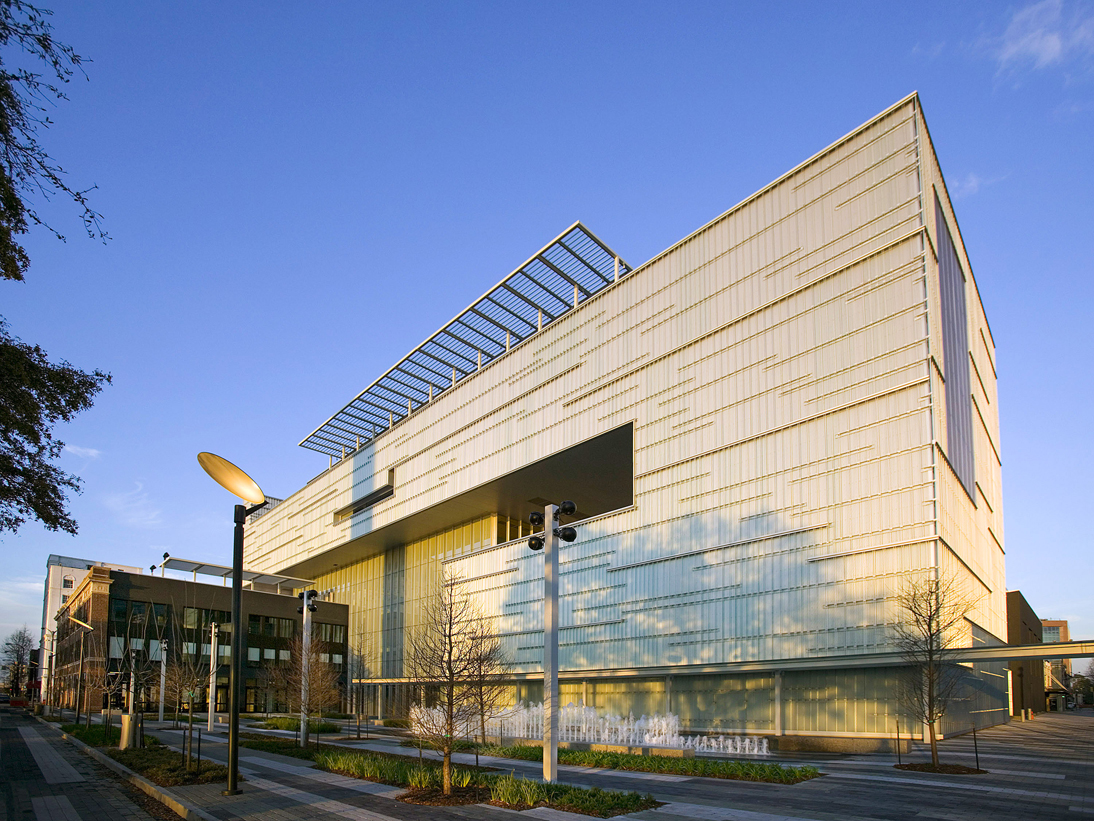
The Shaw Center 10 years later
File photo
The landmark continues to drive revitalization downtown
John Davies still beams when he talks about how it all came together.
The president and CEO of the Baton Rouge Area Foundation was heavily involved in fundraising for what was then a wild idea—one he initially thought “preposterous”—to build a massive cultural center around and above the historic Auto Hotel downtown.
The aging loft building would be fully renovated, with commercial space on the street level and offices for local arts organizations above. But the ultra-modern, 125,000-square-foot addition would be the eye-catcher, housing the LSU Museum of Art, which had outgrown its campus location, a theater with seating for 325, gallery spaces and, heck, even an upscale restaurant on the rooftop.
|
|
The Shaw Center for the Arts opened March 5, 2005, during a glitzy weekend of exhibitions, music and performances that really haven’t stopped in the 10 years since. The center has become the beating heart of a resurgent downtown and a showpiece for the cosmopolitan direction Baton Rouge is headed.
When urban planner Andrés Duany mapped out Plan Baton Rouge in 1998—the roadmap for revitalizing downtown—a cultural center built around the empty Auto Hotel on Lafayette and Convention streets was the focal point.
“That block was the center of it,” Davies says. “It wasn’t until we got into the community process for Plan Baton Rouge [with public meetings] that we realized it was the most important block of downtown.”
From the rooftop of the new Shaw Center, with its sweeping views of the river, residents would remark while sipping cocktails that “it doesn’t even feel like we’re in Baton Rouge anymore.” From that same vantage point, the movers and shakers could scope out what was next for downtown, such as the eyesores next door—formerly the Heidelberg Hotel and the Capitol House—which would be converted into the Hilton Baton Rouge Capitol Center a year later. Several more redevelopments followed suit in the vicinity, and the activity hasn’t ceased.
The mixed-use development 440 on Third, home to the new Matherne’s grocery store, opened in January. The Commerce Building on Third and Laurel streets is preparing for a revamp as a residential development, and the IBM Service Center, with its own residential and commercial components, is nearing completion.
The Shaw Center block is still a hive of redevelopment activity 10 years later, with the Onyx Residences scheduled for completion in the fall. The mixed-use building will add 28 apartments and 5,600 square feet of street-level commercial space to the block on the corner of Third and Convention streets.
Davies sees it all as a domino effect spurred by the success of the Shaw Center. While Plan Baton Rouge was coming together, Duany told Davies, “It takes three good active blocks to generate a sense of community. One doesn’t do it.”
“And we’ve done better than that, obviously,” Davies says. “They are really like dominoes, and they began with the Shaw Center setting the flag—the big, immense, attractive flag—in the middle of downtown.”
Vision of the future:
When the big-screen adaptation of Stephenie Meyer’s The Host started shooting in the Capital City in 2012, director Andrew Niccol looked to the Shaw Center for inspiration. Two identical Shaw Centers dot the CGI cityscape in the futuristic film, which was released in 2013.
|
|
|

